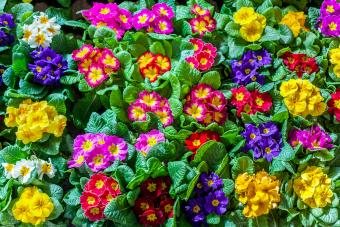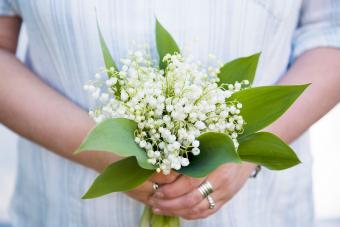
If you've got a February birthday or know someone born in this winter month, you have your pick of some beautiful birth flowers (see what we did there?). From the gorgeous iris to the pretty primrose, February birth flowers offer so many ways to celebrate. We love all of them, and we know you will, too.
Violet - February Birth Flower
Violets are captivating — both for their beauty and for the myths surrounding them. They make a great gift for someone with a February birthday (or for yourself).
Over 500 Beautiful Species
There are more than 500 viola genus species — or members of the violet family. In fact, most people think of violets as being strictly purple or blue flowers. However, some violet varieties are cream-colored or yellow.
Myths About the Violet
There are several Greek myths about how violets were created. One states that the Greek god Attis was gored by a wild boar and died. Violets grew where his blood-drenched the ground. Violets were also revered as being sacred to Ares, god of war. Another Greek myth claims that Artemis turned one of her nymphs into a violet to protect her virtue from the amorous attentions of the god Apollo.

Many legends tell of volunteer violets emerging from the graves of maidens. Other meanings of violets include faithfulness, spiritual wisdom, and mourning.
Iris - February Birth Flower
Hummingbirds and butterflies love irises, and they're not the only ones. This is a popular February birth flower, too.
Over 300 Species and Lots of Colors
There are over 300 iris species, each with six-petal blossoms. The three outer petals that hang down and are called "falls,' while the other three petals stand upright and are known as "standards." Iris is typically a purple to blue-purple-colored flower. However, there are other colors available, such as pink, pale blue, yellow, and a deep mauve.
The Myth Behind the Iris
In Greek mythology, Iris was the messenger of the gods and was the rainbow personified. She had a twin sister who betrayed the Olympian gods by becoming a messenger for the Titans.

Gifting irises to someone with a February birthday conveys the message of faith and hope. Other meanings for this gorgeous flower include courage, wisdom, and admiration. When you give someone irises, you are professing a deep love for the person.
Related: Discover Your Zodiac Sign's Flowers
Primrose - February Birth Flower
Another gorgeous and vibrant birth flower for people born in the month of February, the primrose is absolutely captivating.
Over 400 Species and a Range of Colors
There are over 400 species of the primrose (Primula vulgaris). Primroses are easy to grow and are some of the first flowers to bloom in spring. The primrose grows between 4" to 12" tall. The green leaves have a tongue-like shape with a textured wrinkly surface. The uneven edges of the leaves add to the overall rosette shape the leaves create to nestle the flowers in their center.
Primrose produces a yellow flower. However, you'll find a wide range of hybrid primrose colors. Some of these include orange, blue, white, red, cream, and pink.
Myths About the Primrose
Scottish and Irish legends connect primroses to fairies, and it's said that if you leave primroses by your front door, the fairies will see that as an invitation. Shakespeare used the primrose in many of his works, and it's considered his favorite flower.

Traditionally, primrose flowers were given to a lover. The meaning behind sending a primrose is a floral statement of a newfound love. Sending primroses is a passionate declaration that you simply cannot live without your new love.
Other Important Birth Flowers
February isn't the only month with a birth flower. We love the variety and magic associated with all these birthday blooms, too.
| Month | Flowers |
|---|---|
| January | Carnation, snowdrop |
| March | Daffodil and jonquil |
| April | Daisy and sweet pea |
| May | Lily of the valley and hawthorne |
| June | Rose and honeysuckle |
| July | Larkspur and water lily |
| August | Gladiolas and poppy |
| September | Aster and morning glory |
| October | Marigold and cosmos |
| November | Chrysanthemum |
| December | Narcissus, poinsettia, and holly |
Gorgeous February Flowers
You have three choices of a February birth flower to grow or send to someone (or give yourself), and they're all so pretty. We love them all, so we don't think there's a reason to choose just one.







